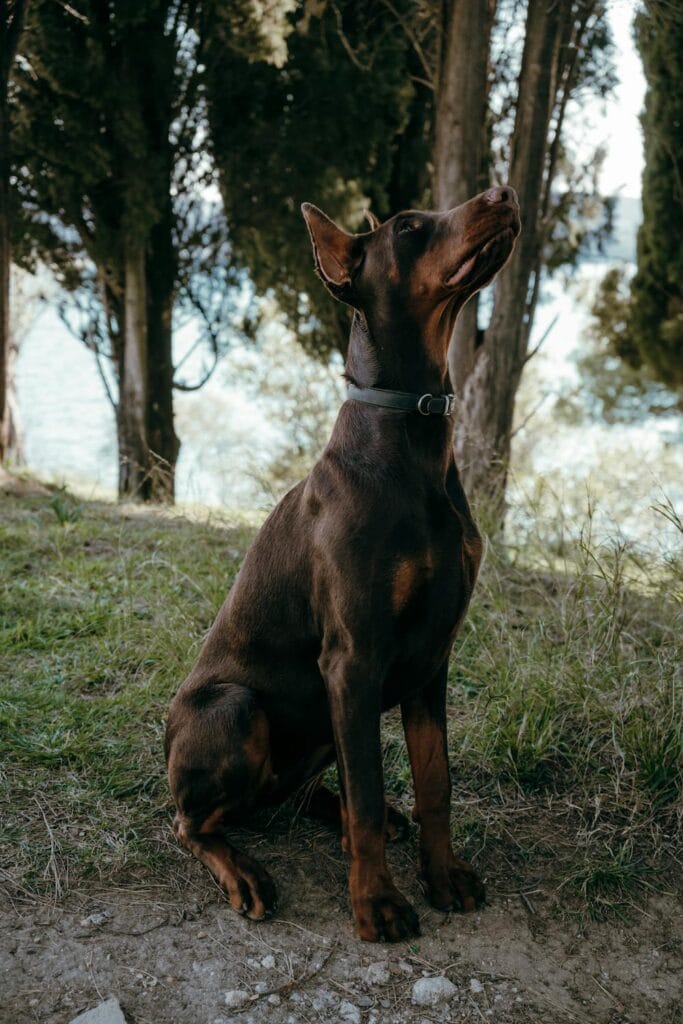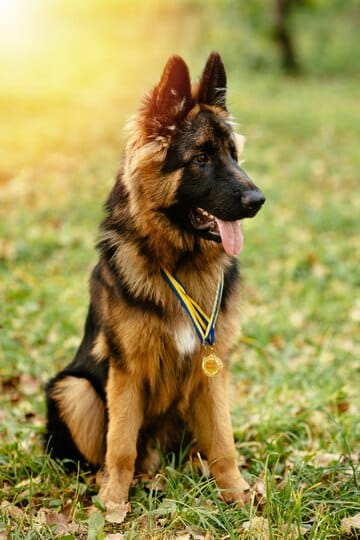- Introduction: The Challenge of the Unleashed Hound 🏞️
- The Basics: Understanding Hound Behavior 101 🎓
- The Big Question: Can Hounds Really Be Trained Off-Leash? 🤔
- Hounds vs. Other Dogs: The Off-Leash Challenge 📊
- The Pros of Off-Leash Hound Training: Freedom and Beyond 🌟
- The Cons: Realities and Risks of Off-Leash Hounds 😓
- The How: A Step-by-Step Guide to Off-Leash Hound Training 📝
- 1. Laying the Foundation: Basic Obedience 🏫
- 2. Mastering the Recall: The Key to Off-Leash Success 🔑
- 3. Impulse Control: Teaching Your Hound to Think Before Acting 🧠
- 4. Scent Work: Channeling the Nose Productively 👃
- 5. Gradual Freedom: The Long Line Technique 🐾
- 6. Environmental Awareness Training: Teaching Boundaries 🏞️
- 7. Proofing: Putting It All Together 🧪
- When to Start: The Age Factor in Off-Leash Training 🗓️
- Why Train Off-Leash? The Psychology Behind the Freedom 🧠
- Solutions to Common Off-Leash Hound Challenges 🛠️
- Expert Opinions: What the Pros Say About Off-Leash Hounds 🎓
- The Future of Off-Leash Hound Training: Trends and Innovations 🚀
- Case Studies: Real-Life Success Stories 📖
- FAQs: Your Burning Questions About Off-Leash Hound Training Answered 🙋♀️🙋♂️
- Conclusion: Embracing the Challenge of the Off-Leash Hound 🌈
Introduction: The Challenge of the Unleashed Hound 🏞️
Picture this: a crisp autumn morning, leaves crunching underfoot, and your faithful hound by your side – unleashed and free, yet perfectly obedient. For many hound owners, this scene might seem like a far-fetched dream. After all, aren’t hounds notorious for their strong prey drive and tendency to follow their noses into the sunset? But what if we told you that with the right approach, patience, and understanding, off-leash training for hounds isn’t just possible – it can be incredibly rewarding for both you and your canine companion?
In this comprehensive guide, we’ll dive deep into the world of off-leash hound training. We’ll explore the challenges, celebrate the victories, and provide you with a roadmap to transform your scent-driven sidekick into a reliable off-leash partner. So, grab a treat (for you and your hound! 🍖), and let’s embark on this exciting journey of canine education and freedom!
The Basics: Understanding Hound Behavior 101 🎓
Before we leap into the intricacies of off-leash training, it’s crucial to establish a solid foundation of understanding about hound behavior and instincts.

Hound Breeds: A Diverse Family of Sniffers 👃
Hounds come in various shapes and sizes, but they all share a common ancestry as hunting dogs. Let’s break down the main categories:
- Scent Hounds: Breeds like Beagles, Basset Hounds, and Bloodhounds
- Sight Hounds: Including Greyhounds, Whippets, and Afghan Hounds
- Scenthounds: A combination of both, such as the Rhodesian Ridgeback
Each category has its unique challenges when it comes to off-leash training.
The Hound Mindset: Born to Hunt 🏹
Understanding the hound’s innate instincts is key to successful training:
- Strong prey drive
- Incredible sense of smell (for scent hounds)
- Independent thinking
- Stamina and endurance
- Pack mentality
These traits, while making hounds excellent hunters, can pose challenges in off-leash situations.
The Big Question: Can Hounds Really Be Trained Off-Leash? 🤔
Now, let’s address the elephant in the room: Is it truly possible to train a hound to be reliable off-leash? The answer is… yes, but with caveats:
- Individual Personality: Some hounds are more biddable than others.
- Training Consistency: Success depends heavily on dedicated, ongoing training.
- Environmental Factors: The setting plays a crucial role in off-leash reliability.
- Age and History: Younger hounds and those with less ingrained habits may adapt more easily.
Let’s break this down further with a comparison across different hound breeds:
| Hound Breed | Off-Leash Trainability (1-10) | Key Challenges | Training Focus |
|---|---|---|---|
| Beagle | 5 | Strong scent drive | Scent work as reward |
| Basset Hound | 4 | Stubbornness, scent focus | Patience, consistency |
| Bloodhound | 3 | Extremely strong nose | Scent-based recall |
| Greyhound | 7 | High prey drive | Impulse control |
| Whippet | 6 | Speed, sight drive | Focus training |
| Rhodesian Ridgeback | 6 | Independence | Leadership, bonding |
Hounds vs. Other Dogs: The Off-Leash Challenge 📊
How do hounds compare to other dog groups when it comes to off-leash reliability? Let’s take a look:
| Dog Group | Off-Leash Reliability (1-10) | Notable Traits |
|---|---|---|
| Hounds | 5 | Strong prey drive, scent focus |
| Herding Dogs | 8 | High trainability, strong work ethic |
| Sporting Dogs | 7 | Eager to please, high energy |
| Terriers | 6 | Independent, feisty |
| Working Dogs | 7 | Task-oriented, loyal |
| Toy Breeds | 5 | Variable trainability, often attached to owners |
As we can see, hounds present unique challenges compared to some other dog groups.
The Pros of Off-Leash Hound Training: Freedom and Beyond 🌟
While challenging, successfully training a hound to be off-leash comes with numerous benefits:
- Increased Exercise: Hounds can run and explore more freely, getting better exercise.
- Mental Stimulation: Off-leash activities provide enrichment and mental challenges.
- Stronger Bond: Working together builds trust between you and your hound.
- Versatility: Enables participation in a wider range of activities and sports.
- Safety in Emergencies: A well-trained off-leash hound is safer if accidentally let loose.
- Natural Behavior Expression: Allows hounds to engage in natural behaviors more freely.
The Cons: Realities and Risks of Off-Leash Hounds 😓
It’s equally important to consider the potential downsides:
- Safety Concerns: Risk of the hound running off or into dangerous situations.
- Legal Issues: Many areas have leash laws that must be respected.
- Wildlife Disturbance: Unleashed hounds may chase or disturb local wildlife.
- Social Conflicts: Not all people or dogs are comfortable around off-leash dogs.
- Training Challenges: Requires significant time, patience, and consistency.
- Unpredictability: Even well-trained hounds may occasionally give in to instincts.
The How: A Step-by-Step Guide to Off-Leash Hound Training 📝
Now that we’ve covered the why, let’s dive into the how. Training a hound to be reliable off-leash is a journey, not a destination. Here’s a roadmap to guide you:
1. Laying the Foundation: Basic Obedience 🏫
Before even thinking about off-leash work, ensure your hound has a solid grasp of basic commands:
- Sit
- Stay
- Come
- Heel
- Leave it
These form the building blocks of more advanced off-leash skills.
2. Mastering the Recall: The Key to Off-Leash Success 🔑
A rock-solid recall is crucial for off-leash reliability. Here’s how to build it:
- Start in a distraction-free environment
- Use high-value treats and enthusiastic praise
- Practice the “come” command on a long lead
- Gradually increase distractions
- Never punish a hound for coming to you, even if it took time
3. Impulse Control: Teaching Your Hound to Think Before Acting 🧠
Hounds need to learn to control their impulses. Try these exercises:
- “Wait” before meals
- “Leave it” with increasing temptations
- “Stay” with distractions
4. Scent Work: Channeling the Nose Productively 👃
Engage your hound’s natural abilities in a controlled manner:
- Hide treats or toys for them to find
- Participate in nosework classes
- Use scent games as a reward during training
5. Gradual Freedom: The Long Line Technique 🐾
Use a long training lead to simulate off-leash freedom:
- Start with a 15-foot lead in a secure area
- Practice recalls and obedience
- Allow some freedom to explore
- Gradually increase the length of the lead
- Practice in various environments
6. Environmental Awareness Training: Teaching Boundaries 🏞️
Help your hound understand limits:
- Use visual boundaries in training areas
- Teach a “stop” or “wait” command at boundaries
- Practice in various locations with different distractions
7. Proofing: Putting It All Together 🧪
Test and reinforce training in various scenarios:
- Different locations
- Various times of day
- With other dogs present
- Around wildlife (safely and legally)
Remember, this process takes time – often months or even years of consistent work.
When to Start: The Age Factor in Off-Leash Training 🗓️
The ideal time to begin off-leash training can vary based on the individual hound:
| Age Group | Trainability | Focus Areas |
|---|---|---|
| Puppy (2-6 months) | High | Basic obedience, socialization |
| Adolescent (6-18 months) | Moderate | Reinforcing basics, impulse control |
| Adult (18 months-7 years) | Variable | Advanced training, overcoming established habits |
| Senior (7+ years) | Moderate to Low | Maintaining skills, adapting to changing abilities |
Ideally, start with foundational skills as early as possible, but it’s never too late to begin training.
Why Train Off-Leash? The Psychology Behind the Freedom 🧠
Understanding the psychological benefits can help motivate consistent training:
- Fulfillment of Natural Instincts: Allows hounds to engage in natural behaviors
- Increased Confidence: Successful off-leash experiences build self-assurance
- Stronger Human-Canine Bond: Working together enhances your relationship
- Mental Stimulation: Off-leash training provides cognitive challenges
- Reduced Frustration: Allows for more natural movement and exploration
Solutions to Common Off-Leash Hound Challenges 🛠️
Even with thorough training, you may encounter some hurdles. Here are solutions to common issues:
1. The Runaway Hound 🏃♂️
- Solution: Increase the value of staying near you. Use high-value treats, exciting toys, and engage in fun activities together.
2. The Selective Listener 👂
- Solution: Work on attention exercises. Reward eye contact and responsiveness to their name.
3. The Wildlife Chaser 🐰
- Solution: Teach a strong “leave it” command and practice with increasing distractions. Consider using a prey-drive minimizing harness for added control.
4. The Scent-Obsessed Sniffer 👃
- Solution: Incorporate scent work into your training regimen. Use their natural abilities as a reward.
5. The Social Butterfly 🦋
- Solution: Practice recalls away from other dogs. Teach a solid “heel” command for passing distractions.
Expert Opinions: What the Pros Say About Off-Leash Hounds 🎓
Let’s hear from some experts in the field:
Dr. Sarah Johnson, Veterinary Behaviorist: “While challenging, off-leash training for hounds is possible with the right approach. It’s crucial to understand and work with their instincts rather than against them.”
Professional Dog Trainer Mark Thompson: “Consistency is key with hounds. Their independent nature means you need to make yourself more interesting than the environment – no small feat, but definitely achievable!”
Hound Breeder Lisa Chen: “In my experience, starting early is crucial. Puppies who are exposed to off-leash training concepts from a young age tend to be more reliable as adults.”
The Future of Off-Leash Hound Training: Trends and Innovations 🚀
As we look to the future, several trends are shaping the world of off-leash hound training:
- Technology Integration: GPS collars and training apps are becoming more sophisticated
- Positive Reinforcement Focus: A continued shift away from punitive methods
- Scent Work Sports: Growing popularity may aid in off-leash training
- Environmental Awareness: Increased focus on training that respects wildlife and natural areas
- Breed-Specific Programs: More tailored approaches for different hound breeds
Case Studies: Real-Life Success Stories 📖
Let’s look at some real-world examples of successfully trained off-leash hounds:
Case 1: Bella the Beagle 🐶
Bella, a 3-year-old Beagle, was trained off-leash using scent work as a primary motivator. Her owner incorporated daily “sniff walks” where Bella was allowed to follow her nose within boundaries. After 6 months of consistent training, Bella could reliably be off-leash in enclosed areas.
Case 2: Max the Bloodhound 🐕
Max, a 5-year-old Bloodhound, was considered “untrainable” off-leash until his owner started using tracking exercises as rewards. By channeling Max’s incredible nose into structured activities, he learned to check in regularly during off-leash time.
Case 3: Luna the Whippet 🦮
Luna, an 18-month-old Whippet, was trained using a combination of impulse control exercises and sight-based recall cues. Her owner used a flirt pole to teach Luna to resist the urge to chase and return on command.
FAQs: Your Burning Questions About Off-Leash Hound Training Answered 🙋♀️🙋♂️
Q: How long does it typically take to train a hound to be reliable off-leash?
A: This varies greatly depending on the individual dog, consistency of training, and environmental factors. It can take anywhere from several months to a few years.
Q: Is it ever too late to start off-leash training with my hound?
A: While starting early is ideal, it’s never too late to begin training. Older hounds may take longer to adapt to new habits, but can still learn.
Q: Are some hound breeds easier to train off-leash than others?
A: Generally, yes. Sight hounds like Greyhounds often have an easier time than scent-driven breeds like Beagles or Bloodhounds. However, individual personality plays a significant role.
Q: What should I do if my hound runs away when off-leash?
A: Stay calm and avoid chasing, as this can turn it into a game. Use your recall command and show high-value treats. If needed, try running in the opposite direction to trigger their instinct to follow.
Q: Are there any tools that can help with off-leash training for hounds?
A: Yes, long training leads, high-value treats, engaging toys, and potentially a GPS collar can all be helpful tools in the training process.
Conclusion: Embracing the Challenge of the Off-Leash Hound 🌈
Training a hound to be reliable off-leash is undoubtedly a challenge, but it’s one that can yield incredible rewards. The key lies in understanding your hound’s unique instincts and working with them, not against them. Remember, this journey is about building a stronger bond with your four-legged friend while giving them the freedom to express their natural behaviors safely.
As you embark on this adventure, keep in mind that progress may be slow, and setbacks are normal. Celebrate the small victories, stay consistent in your training, and always prioritize your hound’s safety and well-being. With patience, persistence, and a lot of love, you can nurture a wonderful off-leash relationship with your hound.
So, whether you’re starting this journey with a playful Beagle puppy or working to teach an old Bloodhound new tricks, remember that the path to off-leash reliability is as much about the journey as it is the destination. Enjoy the process, learn from your hound, and relish in the moments of freedom you’ll share together.
Happy training, hound lovers! May your adventures be filled with joyful sniffs, exciting discoveries, and the unparalleled bond that comes from trusting your hound off-leash. Here’s to many happy trails ahead! 🐾🌳🦮































